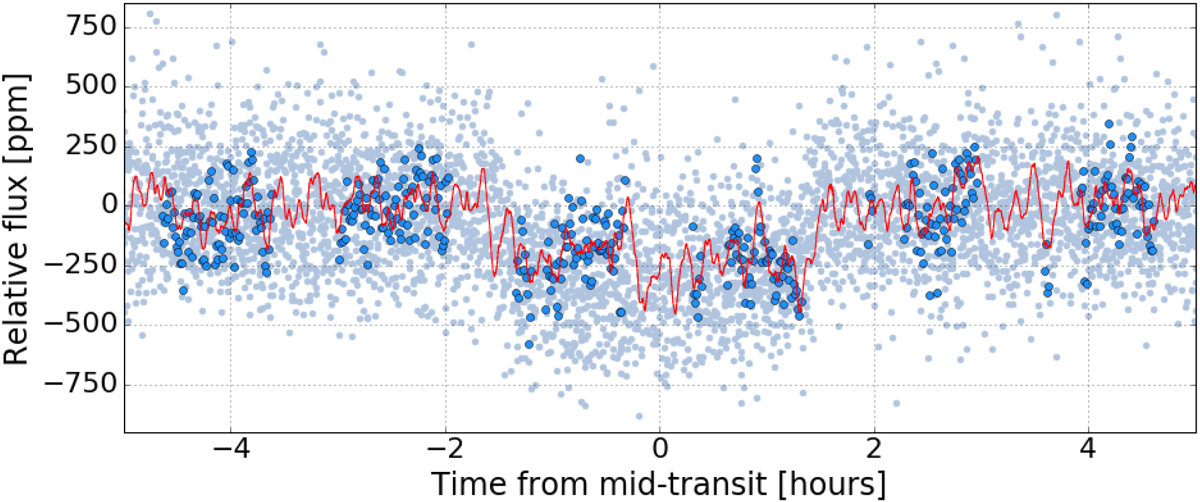Fig. 17.

Dark blue points: light curve extracted from a CHEOPSim image time series, using photometric extraction performed by the data reduction pipeline that will be used with real CHEOPS data, for planet π Men c (radius 2.04R⊕, orbital period 6.27 days), orbiting the star Pi Mensae (V = 5.67, spectral type G0V). The exposure duration is 0.35 s and the exposures are stacked with stacking order 33. Gaps in the light curve correspond to interruptions due to Earth occultation (once per CHEOPS orbit). The simulated photon flux from the target star incident on the telescope, with stellar granulation as the only noise source, is shown by the red line. The pale blue-grey points show the phase folded light curve for the planet π Men c as measured by TESS (Huang et al. 2018).
Current usage metrics show cumulative count of Article Views (full-text article views including HTML views, PDF and ePub downloads, according to the available data) and Abstracts Views on Vision4Press platform.
Data correspond to usage on the plateform after 2015. The current usage metrics is available 48-96 hours after online publication and is updated daily on week days.
Initial download of the metrics may take a while.


